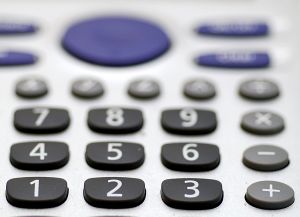 He was a widower and a grandfather. He arrived at the mediation with his attorney and one of his adult daughters for moral support. The trial date loomed, and the judge had urged both sides to come to the table to settle this tort case.
He was a widower and a grandfather. He arrived at the mediation with his attorney and one of his adult daughters for moral support. The trial date loomed, and the judge had urged both sides to come to the table to settle this tort case.
After the accident, he could no longer babysit his grandchildren because he was not able to lift them. An amateur musician since boyhood, he was unable to sit at the piano for more than 10 minutes, which meant he could no longer practice the complex classical pieces that he had loved to play.
Before the mediation, the lawyers had swapped numbers but remained miles apart.
The defense attorney began the mediation by sincerely offering his sympathy and concern to the plaintiff, and telling him how appreciative he was that the plaintiff was willing to come to mediation. But there was no getting around the fact that this was a money case. A “Getting to Yes” feel-good ending, with a creative settlement with monetary and nonmonetary elements that would produce mutual gain and value, was probably not possible.
Liability and damages were of course disputed. Witness testimony conflicted. The plaintiff’s attorney had explained to his client the uncertainties that trial presented. Based on the statistics the attorney had compiled, the odds favored the defense by a wide margin.
For the defense, a recent court decision had left precedent shaken; at least one issue would have to be litigated. The defense attorney considered the risks and concluded that removing the uncertainty through settlement served his client best.
Through the exchange of numbers and the reasons supporting them, each side gradually worked their way closer to each other. During the penultimate round, I sat in the conference room with the plaintiff, his daughter, and his lawyer as he weighed the latest offer. The defense lawyer waited outside.
The plaintiff looked at the number his lawyer had written down on his pad of yellow paper. “Is this what I’m worth?” he asked. The case file sat on the table between us. He pointed to the docket number on the file. “I’m just a number to the court and to him,” he said, gesturing to the waiting area outside the door where the defense lawyer sat.
He pulled out a battered old wallet; from an inner fold he carefully withdrew photos of his grandchildren. The photos were creased and bent at the edges, smudged with fingerprints from regular handling. He placed them on the table in front of me. “I can’t get down on the floor and play my own grandkids, “ he said, his voice breaking. “When they get older, I won’t be able to sit with them on the piano bench and teach them how to play music like my own grandfather taught me.”
He pointed again to the number on his lawyer’s pad of paper. “Do you mean to say that I’m only worth this? How can my pain and the diminishment of the quality of my life be worth so little in the eyes of the law?”
I listened closely to this man struggling with the limitations of the Law, and the loss of enjoyment of life he was coping with. I worked with the three of them – man, daughter, lawyer – to explore not just the money issues but the emotional and personal elements that were present, and talk through the difficult decisions to be made.
His daughter put her arm around his shoulders. His lawyer explained patiently, not for the first time, how the law values personal injury claims, about the difficulties and burden of proof, about the risks of trial, and how all that must be calculated in assessing an offer. Such cold calculations and so many constraints. I felt infinite respect for him as he weighed his choices.
In the litigated case, it can be all too easy to forget those standing directly at the heart of the dispute, the ones affected directly by its outcome. For the professionals perhaps these calculations – statute, case law, damages, risk – are part of the daily routine. Putting a price on human suffering is part of the commonplace business of law. Yet for ordinary people the law – the Law – can seem cold, as rigid and unfeeling as the stone columns of the courthouse. The Law reduces unfortunate events and their impact on human life into their numerical equivalencies.
At the dawn of the modern dispute resolution movement in the U.S., it was not for nothing that Dean Roscoe Pound of Harvard Law School called upon the legal profession to transform its institutions of justice and adjust its principles “to the human conditions they are to govern”, “putting the human factor in the central place”. Neglecting to do so comes at a cost – eroding confidence in the law, in justice, in settlement.
Mediation fortunately has the capacity to put the human factor front and center. I can still see the defense lawyer, holding in his hands the dog-eared photos of the plaintiff’s grandchildren, before proposing the final figure that settled the case.
________________________
To make sure you do not miss out on regular updates from the Kluwer Mediation Blog, please subscribe here.


